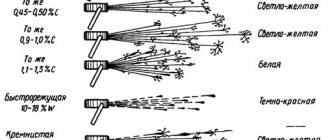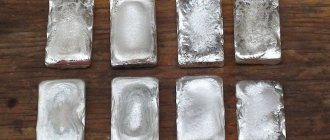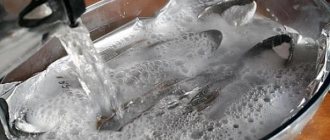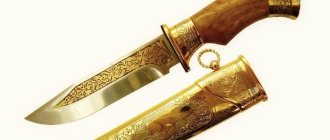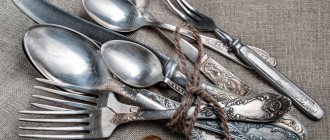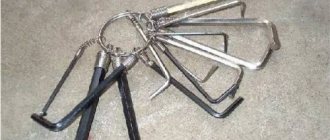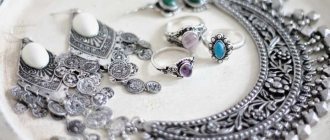Recently, the relevance of gold refining has dropped significantly. This is primarily due to the fact that there are fewer and fewer radio components produced in the USSR, which are being replaced by imported ones containing precious metals in very small quantities. But silver refining is becoming increasingly popular. Firstly, the demand for this metal is growing, as are prices. Secondly, silver is an industrial precious metal, so there are many more areas of its use, and accordingly there is plenty of silver scrap. In addition, the silver refining process is much easier.
How to remove silver from contacts: various ways to obtain the precious metal
Over the past decades, the rapid development of the electronics industry has led to a decrease in the use of precious metals in the production of components and semiconductors.
However, during the existence of the USSR, precious metals were one of the main and extremely important components of manufactured radio electronics.
There is a specialized reference book for the content of precious metals, from which you can find out the list of precious elements that make up a particular electronics component.
The most common noble metal in radio components is technical silver. It is pure metal with minor impurities or no impurities at all.
Thus, technical silver is almost always a high-grade metal of 999 purity. In this article we will tell you where it is found and how to remove this metal from the contacts and separate it from the copper at home.
Introduction
Jewelry making in Rus' has existed since ancient times. Back in the 20th century, Russian silver jewelry was famous for its beauty and sophistication. Even the Byzantines bought products made by Russian craftsmen.
However, in the 18th century there was an urgent need for silver. Therefore, since 1746, the St. Petersburg Mint began to systematically separate and clean metal from the Nerchinsky and Kolyvano-Voskresensky factories using wet and dry methods. Both refining methods were developed by I. A. Schlatter.
There is information that the silver production of the Kolyvano-Voskresensk factories was 3 tons. By the 70s. In the 18th century, production of the precious metal increased to 16 tons per year. After this, the state was able to completely manage with its own silver, without the need to purchase it abroad.
Where is this precious metal found?
For precious elements in electronics, properties such as thermal and electrical conductivity, as well as light reflection, play an important role.
Thus, noble metals are used in the following radio components:
- Microcircuits . The most promising options for metal mining are Soviet-made microcircuits. It is preferable to disassemble microcircuits of the 564, 530, 133, 134, 142, 155 and 1533 series.
- Capacitors . In addition to silver, palladium, platinum and gold can also be found here. The volume of certain metals depends on the type of case (ceramic, yellow, silver and tantalum), as well as on the year of manufacture of the devices. These components were used in various computers, electronic devices and automatic telephone exchanges, as well as in tube televisions and tape recorders.
- Resistors . The basis of these radio-electronic elements is silver. The most cost-effective components are resistors of the PTP, PPBL, PPML and 5K series. It is recommended to collect Soviet resistors produced before 1982. The key difference between this component is the diamond-shaped marking.
- Connectors . These devices, both Soviet and foreign made, are suitable for extracting silver, technical gold and other precious metals. However, the content of precious metals in foreign-made components will be approximately five times lower.
- Transistors . Another electronics component containing a relatively large number of noble elements. The most preferred for silver mining are transistors with the index 2T935A, 2T944A, 2T945A and 2T998A.
In addition to the above radio-electronic components, technical silver may be contained in:
- generator lamps;
- LEDs;
- switches;
- buttons.
Required Tools
The set of basic ones directly depends on which method of obtaining silver you have chosen.
So, to refining Argentum elements you will need:
- glass container;
- quartz stick;
- Nitric acid;
- ammonium chloride;
- salt;
- sodium sulfide;
- any filter;
- funnel;
- deionized water;
- copper scrap.
When carrying out cupellation, you must prepare:
To perform electrolysis you need:
- power unit;
- insulating material;
- stainless steel fork;
- insulating tape;
- tea bag bag;
- any plastic container.
How to obtain silver from radio components at home?
Silver is a highly inert metal, which means that this element has weak reaction-chemical properties. In other words, it is not easily dissolved.
Under normal conditions, silver does not dissolve in hydrochloric and sulfuric acids, as well as in aqua regia , like gold.
However, this metal has good solubility in oxygen-containing nitric acid.
The answers to the questions of how to isolate, smelt or otherwise extract technical silver from radio components come down to three main methods :
- Mechanical processing is the simplest method, suitable for some types of contacts that can be easily separated using pliers and wire cutters.
- Heat treatment - in cases where it is not possible to extract silver mechanically, there is an option to resort to using a gas blowtorch. When the heat is high, the silver elements can be easily separated from the holder using available means.
- Treatment with nitric acid - this method is used to extract precious metals from massive parts of radio-electronic parts. The method requires high care and accuracy at each stage of processing.
Heat treatment
Smelting is suitable for extracting precious metal from silver contacts where the silver is soldered onto the contact holder.
The tools you need to use are a gas torch or cutter, as well as a knife with a wooden handle .
The essence of the procedure
In order to obtain purified silver from technical silver, techniques are used to rid it of various impurities. The combination of all methods is called refining. At its core, this procedure is an industrial process, but all the necessary manipulations can be performed at home.
For cleansing, you can use items such as:
- any silver jewelry;
- sludge obtained during electrical processing of argentum;
- technical scrap containing impurities;
- lead industry waste.
Pure argentum can be obtained from radio components, silver-plated parts and silver contacts, as well as fragments of ores obtained during mining.
Home methods of silver refining include the following techniques:
- chemical chlorination;
- cupellation;
- electrolysis.
The final choice of refining option depends on factors such as:
- amount of metal processed;
- the ability to ensure continuity of the technological process;
- the initial state of the alloy being processed.
Sales of the resulting metal raw materials and its average price per gram
For the subsequent sale of precious metal from contacts, you need to know its resulting mass and sample. As mentioned earlier, technical silver used in radio electronics is a pure metal of 999 purity.
Accordingly, metal obtained mechanically or by smelting will be 999 fine. If silver was extracted chemically using nitric acid, the output would be a metal of approximately 980 fineness. This is due to the copper impurities present in silver.
The direct cost will depend on two main factors :
- percentage of pure silver in the resulting alloy;
- places of sale of precious metals.
For 2022, the price for 1 gram of technical silver scrap is as follows :
- sample 999 – from 24 to 35 rubles;
- 980 – from 21 to 27 rubles;
- 960 – from 16 to 22 rubles;
- 925 – from 9 to 11 rubles.
When selling more than 1 kg of precious metal, you can earn 2-4 rubles more for each gram of it.
It is also most likely that on the Internet, using thematic sites and forums, you can find buyers who are ready to offer a higher price for those. silver from contacts than from a pawn shop.
Chemical method
The chemical method is used to extract silver from solutions or salts. First, silver sulfate is obtained by adding sodium sulfate. When ammonium chloride or table salt is added, silver chloride is obtained. The resulting liquid is left to stand until it is separated into fractions. One of them is transparent, the other is cloudy.
Silver is extracted from silver chloride using the soda method or the dry method. To do this, it is mixed in equal proportions with potassium carbonate and melted. At the end of the procedure, the metal is heated and melted again.
Silver refining is considered a fairly profitable business. Now he has another advantage associated with restrictions on the sale of precursors, which include sulfuric acid, necessary for refining gold. The profit far exceeds the costs; according to some data, up to 250% of income can be obtained from mining pure silver.
Silver contacts: how to remove?
Many people still keep radio components from the USSR era in their homes. They contain silver contacts that can be removed at home. To obtain precious metal, you will need to study the procedure and prepare special items.
Silvering with heating of the workpiece
To prepare a set for silvering, during which the product being processed will be heated along with the solution used, several techniques are used.
First way
To implement the first method, a mixture of the following composition is prepared:
- 100 grams of silver chloride;
- 600 grams of potassium bitartrate;
- the same amount of table salt.
To weigh the required amount of reagents you will need scales; simple lever-type ones are quite suitable
The resulting dry mixture, which can be stored for a long time in a dark glass container, is dissolved in water (at the rate of 3 tablespoons of dry mixture per five liters of water) and the resulting solution is brought to a boil. The metal to be silvered is boiled in this solution for a quarter of an hour.
As a result of this treatment, the metal is coated with a matte layer of silver. To give the coating shine, it is necessary to additionally treat the product in a solution of the following composition:
- 4.8 liters of water;
- 300 grams of sulfide sodium salt;
- 100 grams of vinegar-lead salt.
The solution must be filtered before use
This solution is brought to a temperature of 70–80° and the product is kept in it for 10–15 minutes. As a result of this treatment, the metal surface acquires a characteristic silver shine.
Second way
You can also silver plate a metal using the following composition:
- silver chloride, obtained from 25 grams of silver nitrate;
- 150 grams of potassium bitartrate;
- table salt;
- water.
2-3 tablespoons of this mixture are added to five liters of water, which is brought to a boil. The products being processed are immersed in such a solution in a clay or porcelain sieve, while the boiling mixture is continuously stirred with a glass or wooden stick.
Peculiarities
Contacts of electrical components may contain pure silver. There are several types of connections.
- Those that are not magnetic . The silver content in this group is the highest.
- Magnetizable . They contain the least amount of pure metals.
- Copper . Soldering is a copper plate that is coated with a small layer of silver.
Silver contacts are used in low power devices. Pure metal can be extracted from:
- electromagnetic starters;
- electric machines;
- relay;
- temperature sensors;
- silver-zinc batteries.
Recommendations
Since work is carried out with aggressive chemicals, it is necessary to strictly follow the safety rules:
- be sure to ensure good ventilation of the room (it is better to work outdoors);
- use skin and mucous membrane protection: gloves, goggles, masks or gauze bandages;
- add only acid to water, never the other way around.
- check for the presence of a chemical reagent by dropping the shavings using tweezers. If it does not dissolve, add HCl to remove zinc from the deposited metal.
You can make good money by purifying silver and refining it. The profit in this business will be many times greater than the costs.
Rules of care
You need to keep an eye on the silver contacts. Care involves periodically checking their condition. If they are dirty, you should clean them with a suede or cloth cloth . It will need to be moistened a little in gasoline. Can be cleaned with a stiff hair brush.
Ore mining
Although silver is found in nature in the form of nuggets, it is, however, a rather rare occurrence. The main part of the precious mineral is located in direct or complex deposits. This chemical element is extracted using both open and closed methods.
Mine method
This method is applicable in the case of deep mineral deposits intended for extraction. After completing geological exploration, sampling and analysis, a conclusion is issued on the feasibility and method of extraction.
In the case of mine construction, it is common practice to use mining equipment or carry out blasting operations. The resulting rock is then removed to the surface.
Career method
The fundamental difference between this method and the closed mining method is that there is no need to construct a complex of underground structures. Since this method is used when an ore body is located near the surface of the earth, after opening the soil, the extraction of fossil deposits is usually carried out with excavators, often accompanied by explosions in the process of developing new layers. The ore is then loaded onto heavy vehicles and sent for processing.
Silver mining
How to separate silver?
It has long been practiced to extract pure silver from contact alloys. To extract pure metal, special purification techniques called refining are required. This procedure is divided into several steps, the result of which is always the release of silver.
Although refining is an industrial procedure, you can solder the precious metal yourself at home. There are different ways.
Cupellation
Silver can be separated from low-grade alloys through cupellation. This method is based on the ability of molten silver and lead to begin to oxidize in air. With such contact, the metal will separate. To work, you will need a special furnace equipped with a bowl-shaped crucible. The bowl should have a marl coating based on porous limestone clay.
The process is divided into several stages:
- the oven is heating up;
- then an assay crucible is placed in it, which already contains technical silver and lead;
- heat the crucible until complete melting occurs;
- After this, air masses are released into the furnace.
The process includes a thermal reaction. When it runs out, you can remove the crucible and pour its contents into molds.
After cooling, the alloy takes on a rainbow color scheme. This indicates that, in addition to silver, it contains other precious metals.
Electrolytic method
To extract metal in this way, you will need special plastic or sandstone cells with silver nitrate. The precious metal content in the liquid is at least 50 g/liter. Contaminated silver will be used as the anode. The cathode in this situation is stainless steel, cut into strips of small thickness.
The anodes are placed in textile bags. These bags will then collect contaminated silver particles that were unable to dissolve. Silver macrocrystals will be deposited in the cathodes. They will grow towards the opposite pole until a short circuit occurs. To prevent a short circuit from happening, the branches of the crystals are broken during mixing of the solution . Such crystals independently settle to the bottom, from where they are removed. Ingots can be smelted directly from these components.
Precautionary measures
Silver refining is quite a profitable business. But since some chemicals are used during metal cleaning, safety rules must be followed.
The first thing you should pay attention to even before starting work is the possibility of ventilation of the room in which silver cleaning activities will be carried out . The ideal option would be to carry out work outdoors - this will prevent poisoning from dangerous chemicals. If this is not possible, then you should choose a room in which a powerful hood is installed, and there are also windows that can be opened if necessary.
To protect the skin, eyes and mucous membranes, you should wear rubber gloves, special glasses and always a gown.
When working with nitric acid, you must additionally wear a respirator, otherwise the vapors of this dangerous substance will enter the lungs and cause paralysis of the upper respiratory tract.
Scope of application
Chemical industry
One of the areas of silver consumption is traditionally the chemical industry. This is, first of all, special equipment designed for the production of phenol and glacial acetic acid. Also – covering a whole range of devices and their elements. Even high-grade silver pipes are manufactured to transport a number of highly aggressive liquids.
Silver
A huge number of laboratory glassware and instruments for the needs of the chemical industry contain silver. It is in it that the melting of alkalis and metal salts obtained from alkalis occurs.
Many chemical industry technologies use silver and its compounds as catalysts.
Production of contacts for various electrical products
Silver is also indispensable in the production of various electrical products. The so-called technical grade of this chemical element (999th grade) has an extremely high level of electrical conductivity, thermal conductivity and light reflection.
Wires, solders, contacts, and coatings made from this material have unique technical parameters. The list of products manufactured using silver includes many electronic elements:
- diodes, resistors, transistors, capacitors, microcircuits;
and electrical engineering:
- fuses, connectors, relays, cable products.
Battery production
Modern society wants to have a high level of comfort. To ensure this, we need miniature and durable sources of electric current. Here, silver-zinc miniature batteries, which have longevity and are capable of maintaining a stable voltage level for a long time at a high level of energy intensity, fully demonstrated their advantages.
Larger silver-zinc batteries, which are worthy competitors to their acid and alkaline counterparts, have similar qualities. They are in high demand in vehicles where there is no possibility of connecting to stationary power sources.
Jewelry industry
Due to a number of its features, namely: hygiene, durability, corrosion resistance, ductility, silver has been used as jewelry since ancient times. And not only as a 925 alloy, but also in combination with many other metals.
Thus, one of the cutting-edge developments is a silver-platinum alloy of increased hardness, which contains 5% platinum and at the same time has a high level of resistance to oxidizing agents. Don’t forget about the possibility of applying silver plating to many metal products.
Photo
A quarter of the world's silver production is used for photography. Even before its invention, the unique light-sensitive properties of this precious metal were used to create images, later called daggerotypes. Subsequently, light-sensitive materials created on the basis of silver halide crystals opened up the possibility of obtaining optimal photographs in a very short time.
Production of medals and other awards
Due to the ease of mechanical action in order to give the desired shape and apply the required image, silver, even at the dawn of civilization, was used as a material for the manufacture of various kinds of awards, symbols, memorial signs, orders and medals. And today many companies are ready to provide their services for creating this kind of product from silver-white metal at the request of the customer.
Silver ingot
Coinage
We owe the appearance of the first coins to the inhabitants of the Lydian kingdom, located on the territory of modern Turkey. The craftsmen of that time, by striking a previously prepared and fairly hard stamp with a negative on a softer workpiece, received metal disks with the desired image. It is interesting that even in those days, silver, so convenient for such a task, was used as a material for blanks.
Over the past years, the essence of coinage technology has undergone some changes. A variety of metals and alloys were used. However, in the production of money, the role of precious metals, which have a high value with minimal sizes and at the same time retain their shape for a long time without being subject to destruction and corrosion, remains at the same – highly in demand level. Silver continues to occupy a worthy place among them.
Making mirrors
The high reflective properties of “white metal” were useful for making mirrors. One of the most indispensable attributes of the life of a modern person. In addition to helping in the desire to look good, mirrors allow you to look into the most inaccessible places (internal organs checked during medical examinations, studies of mechanisms, study of complex structures) and significantly expand the horizons of visual perception (the rear view of cars).
Modern technology for manufacturing mirrored reflective surfaces uses three layers of glass coating:
- the first - silver amalgam,
- the second - a silver film,
- the third - polymers.
Medicine and others
From antiquity to the present day, silver, as well as a number of its compounds, have been used in medicine. Possessing antibacterial, astringent properties, as well as a cauterizing effect, preparations from this metal were actively used to treat rheumatic, septic, respiratory and gastrointestinal diseases.
It can be stated with confidence that the predecessor of modern antibiotics was silver, which at one time was widely used in the fight against infectious diseases. Today on pharmacy shelves you can find many drugs containing silver. In addition, it is used to make bactericidal paper, respiratory masks, implants, and even microparticles for studying the human body for diseases.
Other uses include the digestive industry, which installs silver in its apparatus, as well as the process of managing precipitation to cause rain or, conversely, to prevent it. By influencing the clouds with ions of this noble element, the release of moisture from them in the form of rain is provoked in advance, which makes it possible to organize the desired weather in a certain place.
World reserves
According to information provided by the US Geological Survey, the top places in the table of the world's leading powers with the largest reserves of silver are:
- Peru and Poland. Both have about 110 thousand tons of this precious metal. There are other data: Peru – 120 thousand tons. Poland – 100 thousand tons.
- Australia – 89 thousand tons.
- China – 41 thousand tons.
- Mexico – 37 thousand tons.
- Chile – 26 thousand tons.
- USA – 25 thousand tons.
There are no data for the Russian Federation, although according to estimates by a number of experts, the proven reserves of this mineral in our country are about 70 thousand tons (according to other sources, they are estimated at 45 thousand tons). It is clear that it is not possible to accurately calculate underground reserves.

